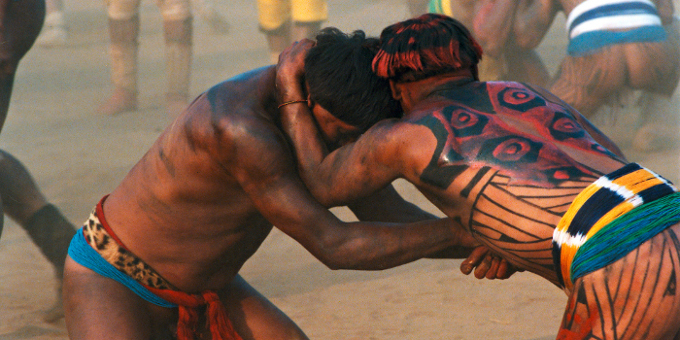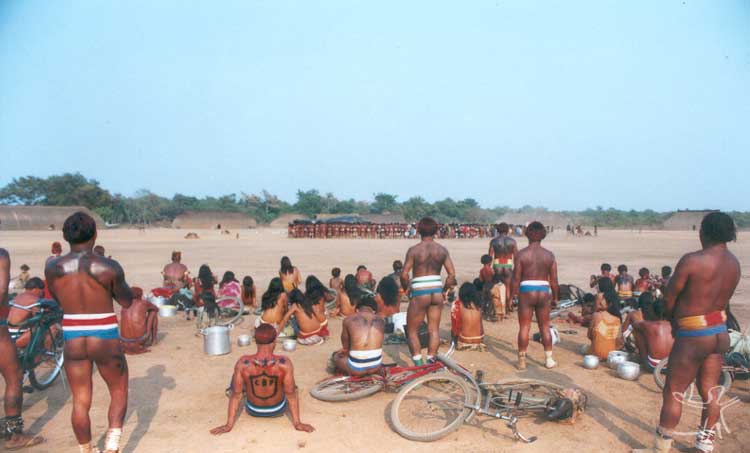Interrelations

Foto: Beto Ricardo, 2002
Indigenous societies have never been in a state of complete isolation, for even before having relations with Brazilian society they have always related among themselves. In many regions and in many ways, different peoples interrelated through wars, exchange of objects, marriages, invitations for ceremonies and rituals etc.
In spite of being transformed with time, these interrelations have not ceased today. They may take place among a small group of neighboring peoples or extend through a vast region. In some cases, they form very complex exchange networks, in which each society has a specialized role. In others, the relations occur only occasionally.
Waiwai
The Waiwai, located in the Northern part of the State of Pará and in the State of Roraima, have always maintained relations of various natures - matrimonial, commercial and ceremonial - with neighboring populations. So much so that today, after the intensification of contacts with non-Indians, they live with other peoples, among them the Katuena, the Xereu and the Hixkaryana. In the Waiwai communities, although at certain times everyone considers herself/himself Waiwai, there are groups that make a point in clearly marking their difference from the others; when necessary, this may mean even the adoption of a posture of rivalry vis-à-vis others.
Upper Negro River
The region of the Upper Negro River has a vast network of relations connecting the various peoples that live there. It is a rule in some of these societies that a man has to marry a woman from another group, who must necessarily speak a different language. Thus the Tukano, the Arapasso, the Desana, the Tariana, the Tuyuka, among so many others, cannot be considered closed groups, but rather units always open and prone to exchanges.
Relations among the groups of the Upper Negro River do not have only the aspect of an alliance. They also reveal a complex hierarchy system. Those considered ‘river Indians’ – that is, who live on navigable regions and generally speak languages of the Tukano or Aruaque families –, marry among themselves, whereas the ‘forest Indians’, who generally speak Maku languages and live at a distance from the large rivers, are marginalized by the others.
‘River Indians’ not only do not marry the Maku but also refuse to learn their language, because they do not follow the correct patterns of residence and because they marry people who speak their own language, something they consider absurd. Both groups nevertheless maintain constant relations: for example, ‘river Indians’ exchange fish and cassava for meat and services from the Maku.
Upper Xingu River
Home of societies of the Jê, Tupi, Caribe, Aruaque and Trumai languages, the region of the Upper Xingu River is where the most intense interrelations among different Indigenous peoples take place in Brazil.
In the Upper Xingu, old conflicts have given way to peaceful intertribal relations, which includes exchanges of objects and rituals. As anthropologist Eduardo Galvão pointed out, at the time of the creation of the Xingu Indigenous Park (early 1960’s), the different peoples living there ended up specializing themselves in the production or extraction of a given item in order to participate in the exchange network. Thus the Waujá made ceramics; the Kamayurá, bows made of black wood; the Kuikuro and the Kalapalo snail necklaces, and so on.

To this day, it is the rituals that provide a common language to all of them. In the kwarúp, a recently deceased chief is honored, and the homage is extended to other well-liked dead. The yawarí is performed to honor those who have been dead for a while, and also for initiating young men. Both rituals strengthen the links that exist among the various peoples, marking in a symbolic way the opposition between warring ferocity (the guests simulate an attack against host village) and regulated reciprocity (exchange of objects and services).